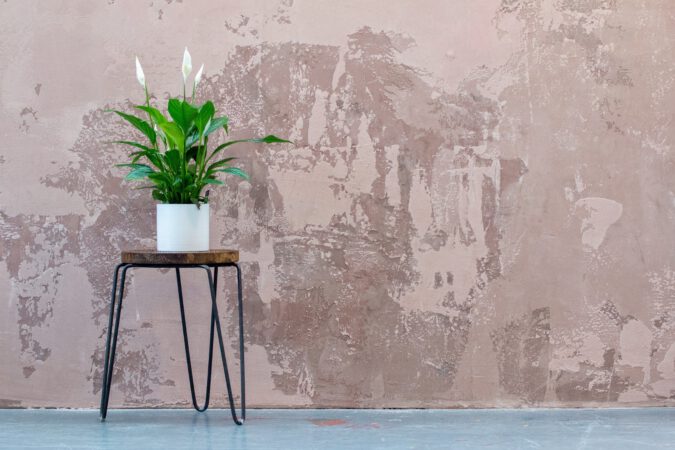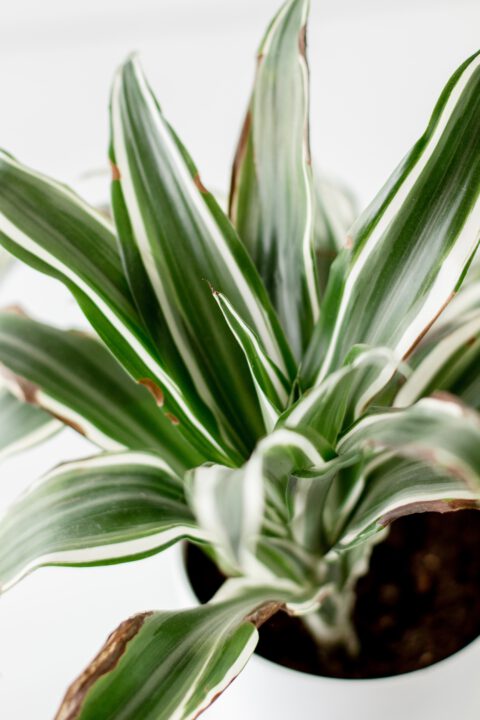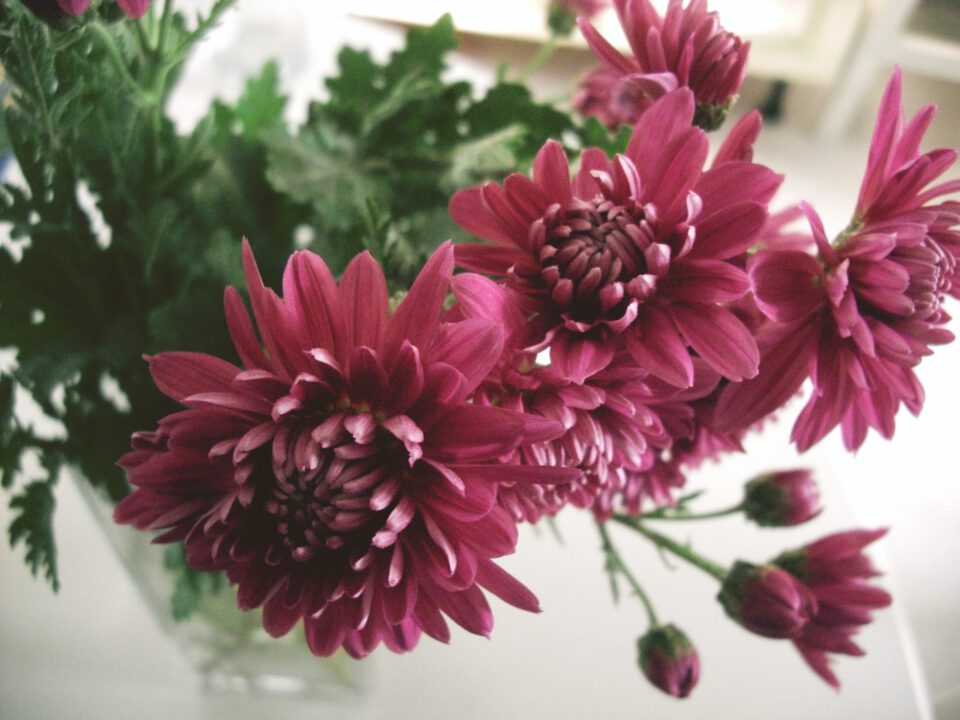Those who work from home can and should beautify their surroundings. Plants in the office not only look nice, but they also provide a pleasant and focused working environment.
Because of their green color, indoor plants reduce stress and ensure that pollutants in the air are reduced. At the same time, they produce oxygen and increase humidity. When compared to a room without plants, this increases concentration, productivity, and satisfaction by up to 15%.
Cardiff University in the United Kingdom investigated the impact of office plants on the well-being of employees in two large corporations. They placed office plants in the companies for this purpose over a few months and then removed them after some time.
The astonishing result: the office plants increased employee productivity and satisfaction, while the ability to concentrate decreased in the non-green phase.
Plants Aid in Stress Relief
Plants in the home have been shown in studies to help reduce stress. In a green environment, people have lower blood pressure and feel more relaxed and happy.
Plants Help Clear Stuffy Noses
Plants in the home reduce the likelihood of colds and stuffy noses by 30%. This is because plants make the air more humid and clean it by taking in dust.
Plants Purify the Air in the Home
Plants not only bind dust, but they also filter pollutants from the air we breathe. They absorb carbon dioxide and convert it to oxygen, among other things. The higher the humidity, the better the indoor climate in the house. A NASA study found that plants like Epipremnum and Spathiphyllum can clean the air inside.

Plants Protect against Allergies
Do you have any young children? Then you should definitely have plants in your home. Children who grow up in a green environment with lots of plants are less likely to develop allergies.
Plants That Protect Against Cigarette Smoke
Toxins in cigarette smoke are filtered by plants. Is smoking permitted in your home? Then Spathiphyllum is an excellent choice.
Plants Help to Improve the Acoustics in the Home
Plant leaves can absorb background noise, which improves indoor acoustics. Are you relocating to a new home or working from home? Then, as a soundproofing measure, place some plants in your living and working areas.
Plants Improve Your Mood
Plants have been shown in studies to aid in the treatment of depression. Plants elevate your mood, provide positive energy, and make you feel happier.
Plants Reduce the Likelihood of Headaches
Plants’ ability to purify the air can help alleviate headaches. Researchers discovered that plants can filter a variety of indoor chemicals from the air, including benzene, trichloroethylene, and formaldehyde. Formaldehyde, a common cause of headaches, is a gas found in almost every indoor environment that is used in the manufacture of leather or carpet.
Plants Improve Concentration Ability
Plants provide another benefit, which is especially important if you study or work from home: Plants encourage concentration.
A natural, green environment has been shown in studies to help you refocus after a brief distraction, stay more alert, and combat emerging fatigue.
Indoor plants in the home and office are essential for maintaining constant humidity and fresh oxygen levels. Some plants, for example, produce one liter of oxygen per hour. This improves concentration and work performance, making green plants popular in offices. Employees in green offices report fewer headaches, dry skin, and colds.

The Best Office Air Purifying Plants
According to the NASA Clean Air Study, the following are some popular air-purifying plants that provide better air quality. The more plants that are placed in the office, the better the air will be cleaned. One plant per ten square meters is recommended.
Peace Lily

Scientists refer to it as “saptiphyllum,” poets refer to it as “peace lily,” and others call it “monocot.” As many names as this plant has, it also has a plethora of health benefits. As a result, the NASA Clean Air Study ranks the monocleaf high on the list of plants with air-purifying properties.
How does the Peace Lily help to clean the air?
Acetone reduction: Acetone is found in a wide range of cleaning products, plastic adhesives, and nail polish removers. If you breathe it in often, it can irritate your skin and eyes, damage your mucous membranes, and hurt your lung tissue.
Benzene reduction: This pollutant is found in plastics, furniture wax, adhesives, wall paint, synthetic fibers, and cleaning agents. It causes long-term eye irritation, drowsiness, headaches, and an increase in heart rate when inhaled.
Pollutant reduction: The pollutant formaldehyde can be found in paper bags, facial tissues, napkins, chipboard, and wall coverings. If you breathe it in often, it can cause irritation and inflammation of the mucous membranes in your nose, eyes, and throat.
Trichloroethylene reduction: Trichloroethylene is commonly found in printing or painting inks, adhesives, and varnishes. Permanent contact can result in paralytic phenomena.
The monocle leaf, according to Feng Shui, balances negative vibrations and brings them back into balance. It is also said to have anti-stress properties.
Dracaena Fragrant

You’ve always wanted a small dragon in your office that you could train? Then Dracaena Fragrant is probably the plant for you. This is one of the more robust and long-living plants. It adds a beautiful accent to the office with its multicolored leaves.
How does Dracaena Fragrant help to improve air quality?
Formaldehyde reduction: Dracaena Fragrant is one of the most effective formaldehyde killers. Within 24 hours, it can kill up to 70% of this pollutant and convert it into non-harmful substances like sugars or amino acids.
Reducing pollution from benzene and trichloroethylene: it also breaks down these chemicals in a big way.
Reduction of the pollutants nicotine, carbon dioxide, and xylene: While Dracaena fragrans does not break down these pollutants as effectively as formaldehyde, benol, or trichloroethylene, it has been scientifically demonstrated to break them down in small amounts. Printing ink, leather, tobacco, and vehicle exhaust, among other things, contain xylene. When inhaled on a regular basis, it causes mouth and throat problems, drowsiness, headaches, heart problems, and liver damage.
Chrysanthemum

The chrysanthemum is probably the most beautiful air-purifying plant (Chrysanthemum morifolium). This is used to decorate many gardens, especially during the cool season. No wonder: with its vibrant flowers, it adds color and evokes memories of warm summer days.
Because some species (particularly Tanacetum species) are extremely toxic to dogs and cats, please consult your local plant store to determine which varieties are appropriate for a pet household.
How does chrysanthemum help to improve air quality?
Reducing the pollutants benzene, trichloroethylene, formaldehyde, and xylene: According to the NASA Clean Air Study, it is one of the most effective pollutant killers of the aforementioned chemicals, along with the monocot (peace lily).
Filtering Pollutants Ammonia and Toluene: Ammonia vapors and toluene irritate mucous membranes in the respiratory tract and eyes, even at low concentrations. Toluene can also harm your nerves, kidneys, and liver.
English Ivy

The English Ivy (Hedera helix) has a charming name. Perhaps the name comes from the fact that this air-purifying plant is also toxic to cats. If you have a cat in the office, you should choose a different plant.
How does English ivy help to clean the air?
Benzene reduction: English ivy is one of the best air-purifying office plants for removing benzene. It can reduce up to 90% of the gas content in 24 hours.
Formaldehyde, xylenes, and toluene are reduced.
Within a twelve-hour period, common ivy removes up to 80% of mold components from the air.
Summary
There are many harmful pollutants in indoor air, such as those found in furniture, building materials, and electrical appliances.
When the air quality is bad, people often have trouble breathing, have irritated mucous membranes, have allergic reactions, feel tired all the time, or get headaches.
Air-purifying plants remove pollutants from the air and thus improve the office’s indoor climate.


